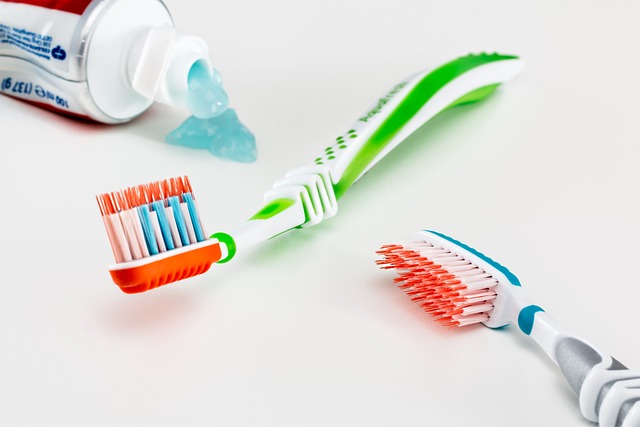Removing Gauze After Tooth Extraction: A Simple Guide
Welcome to our informative guide on removing gauze after tooth extraction! If you’ve recently undergone this dental procedure, you may be wondering about the correct steps to take post-extraction. Don’t worry! We’re here to assist you with a friendly and simple step-by-step approach so that you can feel confident in caring for your healing mouth. Proper gauze removal is crucial in ensuring a smooth and comfortable recovery, so let’s get started on this essential aspect of post-extraction care.
1. Introduction: Understanding the Importance of Gauze in Tooth Extraction
When it comes to tooth extractions, gauze plays a crucial role in ensuring proper healing and recovery. This simple yet effective material is used by dental professionals to control bleeding, promote blood clot formation, and minimize the risk of post-extraction complications. Here, we will delve into the importance of gauze in tooth extraction and shed light on its various benefits.
First and foremost, gauze acts as a barrier between the extraction site and the oral environment, protecting it from contamination and infection. By placing a piece of sterile gauze over the extraction site and applying gentle pressure, any residual bleeding is controlled. This pressure assists in the formation of a blood clot, which is vital for the healing process. Gauze also helps to absorb excess blood and saliva, preventing the patient from swallowing or inhaling them. Additionally, the texture of gauze provides a tactile surface that aids in the removal of any loose fragments or debris from the extraction site, promoting a clean and hygienic environment for healing.

2. Step-by-Step Guide: How to Properly Remove Gauze After a Tooth Extraction
After undergoing a tooth extraction, removing the gauze properly is crucial for a smooth and comfortable healing process. Below, we provide a step-by-step guide to help you navigate this process effectively:
Gently Loosen the Gauze
Begin by locating the gauze placed over the extraction site. With clean hands, gently tug at the gauze to loosen it from the area. Be careful not to apply excessive force, as this could disrupt any blood clots that have formed.
Slowly Remove the Gauze
Once you have loosened the gauze, begin to slowly and steadily remove it from the extraction site. Take your time and be mindful of any discomfort or sensitivity you may experience. If there are any areas where the gauze seems stuck, dampening it with a small amount of water can help ease its removal.
- Avoid Rushing: It is important not to rush the process of removing the gauze to prevent potential bleeding or reopening of the wound. Take your time and proceed carefully.
- Dispose of the Gauze: Once the gauze is completely removed, dispose of it in a hygienic manner. Wrap it in tissue or a plastic bag before disposing of it in a trash bin.
- Observe for Bleeding: After removing the gauze, gently bite down on a fresh piece for another 30 minutes to monitor any lingering bleeding. Contact your dentist if the bleeding persists or intensifies.
By following these simple steps, you can ensure the proper removal of gauze after a tooth extraction, contributing to a successful recovery.

3. When is the Right Time to Remove Gauze? A Brief Timeline
After a dental procedure, the proper care of your wound is crucial for a swift and seamless recovery. One common query patients have is when to remove the gauze from their mouth. Understanding the timeline for gauze removal can help ensure you achieve the best results. Follow this brief guide to determine the right time to remove your gauze:
- Immediately after the procedure: It is important to keep the initial gauze in place for at least 30 minutes to an hour. This allows it to absorb any excess blood in the extraction site and promotes the formation of a blood clot.
- Post 30 minutes to an hour: By this time, the bleeding should have reduced significantly. If bleeding persists, replace the gauze with a fresh one and continue applying gentle pressure. However, if the bleeding has stopped or is minimal, gently remove the gauze and dispose of it properly.
- 48 hours after the procedure: Once you are home, you can remove the gauze at more regular intervals. Replace it as needed with new, clean gauze until the bleeding ceases completely. Remember to follow your dentist’s instructions regarding gauze replacement.
Remember, each individual may have different recovery times, so it’s essential to consult with your dentist for personalized advice. Proper removal of gauze at the right time will support your healing process and ensure optimal oral health.

4. Signs of Proper Healing: How to Know if it’s Time to Remove Gauze
It’s vital to keep an eye on the healing process after any kind of injury or surgical procedure. Removing gauze too early can disrupt the healing process, while leaving it on for too long may lead to complications. Here are a few signs to look out for to determine if it’s time to remove the gauze:
- Minimal or no bleeding: If the bleeding has significantly reduced or stopped altogether, this is a positive indication that the wound is healing properly. You can gently remove the gauze and observe the wound for any signs of active bleeding.
- No visible discharge: The presence of clear or slightly colored fluid is normal during the initial stages of healing. However, if you notice any excessive discharge, pus, or foul smell, it’s essential to consult your healthcare professional.
- Dry wound: A properly healing wound should gradually become drier over time. If the gauze is consistently dry for a consecutive period, it may be time to remove it as it suggests that the wound is closing up.
Remember, every individual heals differently, so it’s crucial to follow your healthcare professional’s specific instructions. If you have any concerns about the healing process or are unsure about removing the gauze, don’t hesitate to seek advice from your healthcare provider. They will guide you in ensuring a smooth and successful healing journey.

5. Removing Gauze Safely: Precautions and Basic Do’s and Don’ts
When it comes to removing gauze after a medical procedure, it is crucial to follow a few precautions to ensure a safe and infection-free healing process. Here are some basic do’s and don’ts to keep in mind:
- Do wash your hands thoroughly: Before removing the gauze, make sure to wash your hands with soap and water for at least 20 seconds. This simple step helps prevent any potential germs or bacteria from contaminating the wound.
- Do moisten the gauze: Before gently removing the gauze, moisten it with saline solution or clean water. This can prevent the gauze from sticking to the wound and causing any unnecessary discomfort or pain.
- Don’t rush: Take your time when removing the gauze, especially if it appears to be sticking to the wound. Pulling it quickly may reopen the wound or cause unnecessary pain.
Additionally, it is important to be cautious and keep the wound site clean to minimize the risk of infection. Remember these tips:
- Don’t reuse gauze: Once you have removed the gauze, do not reuse it. Dispose of it properly to maintain hygiene and prevent any reintroduction of bacteria or contaminants into the wound.
- Do clean the wound: After removing the gauze, gently clean the wound with mild soap and water or as per your healthcare provider’s instructions. Pat the area dry with a clean towel or allow it to air dry before applying a fresh dressing.
- Do contact your healthcare provider: If you encounter excessive bleeding, increased pain, or any signs of infection such as redness, swelling, or discharge, seek medical attention immediately. Your healthcare provider will guide you on further steps to ensure proper healing.
6. Common Concerns: Addressing Potential Complications when Removing Gauze
When it comes to removing gauze after a procedure, there are a few common concerns that people may have. Addressing these potential complications is important to ensure a smooth and comfortable experience. Here are some tips to help you through the process:
1. Pain and discomfort: It is normal to feel some pain or discomfort when removing the gauze. However, there are ways to minimize this. Be sure to take it slow and gentle when taking off the gauze. If it seems to be sticking, you can dampen it slightly with water to help ease the removal process. Additionally, taking a pain reliever before removing the gauze can help alleviate any discomfort.
2. Bleeding: It is not uncommon to experience minor bleeding when removing gauze, especially if it has been in place for a while. To address this concern, keep a fresh piece of gauze or a clean cloth nearby to apply gentle pressure on the site if there is any bleeding. If the bleeding persists or becomes excessive, it is essential to contact your healthcare provider for further guidance.
7. Gentle Techniques: Ensuring a Painless Gauze Removal Process
When it comes to removing gauze, there are gentle techniques that can help ensure a painless process. Here are some tips to make the removal as comfortable as possible:
- Moisten the gauze: Before attempting to remove the gauze, dampen it with warm water or saline solution. This can help soften any dried blood or debris, making it easier to peel off.
- Take it slow: Rather than rushing, gently loosen the edges of the gauze using your fingertips. Slowly peel it back, applying a slight tug to release any adhesions without causing discomfort.
- Use a wet sponge: If the gauze is sticking to a wound, place a wet sponge or cloth on top to help loosen it. Allow it to sit for a few minutes before removing the gauze.
- Apply a lubricant: Applying a thin layer of petroleum jelly or an antibiotic ointment around the wound edges can help reduce friction and make the gauze removal less painful.
Remember, being gentle and patient during the gauze removal process is essential for minimizing discomfort. If you encounter any resistance or excessive pain, it’s best to consult a healthcare professional for guidance. Following these tips should make the experience much more comfortable for you or your loved one.
8. Post-Extraction Care: What to Do After Gauze Removal
After your tooth extraction, it’s essential to follow proper post-extraction care to ensure a smooth and speedy recovery. Once the initial bleeding has subsided and your oral surgeon removes the gauze, there are a few important steps you should take:
• **Maintain gentle pressure**: To moderate bleeding, place a fresh gauze pad over the extraction site and bite down gently. Keep in mind that a little oozing or mild bleeding is normal for the next 24-48 hours.
• **Take prescribed medication**: If your dentist prescribed medications such as antibiotics or painkillers, make sure to take them as instructed. This helps prevent infection and manages any discomfort you may experience.
• **Keep the area clean**: For the next few days, gently rinse your mouth with warm saltwater several times a day to promote healing and reduce bacteria. Avoid vigorous rinsing or spitting forcefully to prevent dislodging the blood clot.
• **Avoid the following**: To promote quick healing, steer clear of smoking, alcohol consumption, using a straw, or consuming hard and hot foods for 24-48 hours. These activities can hinder the healing process and lead to complications.
9. Follow-up Tips: Monitoring Progress After Gauze Removal
Once the gauze has been removed, it’s important to continue monitoring your progress to ensure proper healing and avoid any complications. Here are some follow-up tips to guide you:
1. Keep an eye on the surgical site:
- Observe the area where the gauze was placed for any signs of excessive bleeding, swelling, or redness.
- If you notice any unusual symptoms, contact your healthcare provider immediately.
- Remember, mild inflammation and discomfort are normal, but anything out of the ordinary should be addressed promptly.
2. Maintain good oral hygiene:
- Continue brushing your teeth twice a day, gently avoiding the surgical site.
- Rinse your mouth with a saltwater solution (one teaspoon of salt in a glass of warm water) after meals to promote healing.
- Avoid any hot or spicy foods that may irritate the surgical area.
By following these follow-up tips, you’ll be on your way to a successful recovery. Remember, your healthcare provider is here to support you throughout the healing process, so don’t hesitate to reach out if you have any concerns or questions.
10. Conclusion: Celebrating Successful Healing and a Healthy Smile!
After embarking on a journey towards oral health and making conscious efforts to improve your smile, it’s time to celebrate the successful healing and the arrival of a healthy smile! Congratulations on reaching this significant milestone! Your commitment to diligent dental care and overall oral hygiene has paid off, and you can now enjoy the confidence that comes with a radiant smile.
You’ve come a long way in your dental health journey, and it’s essential to acknowledge and appreciate your progress. Not only has your oral hygiene improved, but your dedication to self-care has also positively impacted your overall well-being. By regularly brushing, flossing, and visiting your dentist, you’ve successfully prevented tooth decay, gum disease, and other dental issues, ensuring your smile remains healthy and vibrant for years to come.
By embracing proper oral care practices and maintaining regular dental check-ups, you have taken significant steps towards enhancing your overall quality of life. Remember, this is just the beginning of your oral health journey. Continue to prioritize your dental hygiene, explore advanced treatments available, and enjoy the countless benefits of a healthy, beautiful smile!
Frequently Asked Questions
Q: Why is gauze placed after a tooth extraction?
A: The primary purpose of placing gauze after a tooth extraction is to control bleeding. The gauze helps to soak up any blood or fluids that may ooze from the extraction site, promoting the formation of a blood clot.
Q: How long should the gauze be left in place?
A: It is generally recommended to leave the gauze in place for about 30 minutes after the tooth extraction. This timeframe allows for proper blood clot formation and gives the tissues time to start healing.
Q: Can I remove the gauze earlier than recommended?
A: It is best to leave the gauze in place for the suggested 30-minute timeframe, as this allows the blood clot to form adequately. Removing the gauze too early may disrupt the clotting process and cause bleeding to persist.
Q: What do I do if the bleeding continues after removing the gauze?
A: In case the bleeding continues after removing the gauze, gently rinse your mouth with cold water to remove any blood clots. Then, place a new piece of clean gauze over the extraction site and apply gentle pressure by biting down for another 20-30 minutes. If bleeding persists, contact your dentist for further guidance.
Q: Is it normal to experience some bleeding after removing the gauze?
A: Yes, it is common to have some minor bleeding after removing the gauze. However, if the bleeding is excessive and doesn’t subside after applying a fresh piece of gauze, you should consult your dentist as soon as possible.
Q: Should I rinse my mouth immediately after removing the gauze?
A: It is best to wait at least 24 hours before rinsing your mouth. Rinse gently with warm saltwater after this initial waiting period, avoiding vigorous swishing or spitting. Rinsing too early can disrupt the blood clotting process, leading to increased bleeding.
Q: Can I eat or drink after removing the gauze?
A: It is recommended to wait until the bleeding has subsided before consuming any food or drinks. Hardenings foods should be avoided as they may disturb the clot and increase bleeding. Stick to soft, cool, and non-spicy foods during the initial healing phase.
Q: How often should I change the gauze after removing the initial piece?
A: After removing the initial gauze, it is typically not necessary to replace it unless bleeding persists. If required, you can use a new piece of clean gauze and change it every 30 minutes until the bleeding stops.
Q: Are there any activities I should avoid after removing the gauze?
A: Yes, it is advisable to avoid any strenuous activities, such as heavy lifting or vigorous exercise, for at least 24 hours. These activities can increase blood pressure and potentially disrupt the clot formation, leading to prolonged bleeding.
Q: When should I follow up with my dentist after tooth extraction?
A: It is important to follow the post-extraction instructions provided by your dentist. However, if you experience excessive bleeding, severe pain, or any complications, contact your dentist immediately for further evaluation and guidance. Otherwise, a follow-up appointment is typically scheduled within a week or as advised by your dentist.
Conclusion
We hope this guide on removing gauze after tooth extraction has provided you with the information you need for a smooth and comfortable recovery process. Remember, it’s crucial to follow your dentist’s instructions and take the necessary precautions to promote healing and prevent any complications. Now that you have a better understanding of the right way to remove gauze, you can confidently navigate this stage of your post-extraction journey. As always, if you have any concerns or questions, don’t hesitate to reach out to your dental care professional. Wishing you a speedy recovery and a healthy smile!






